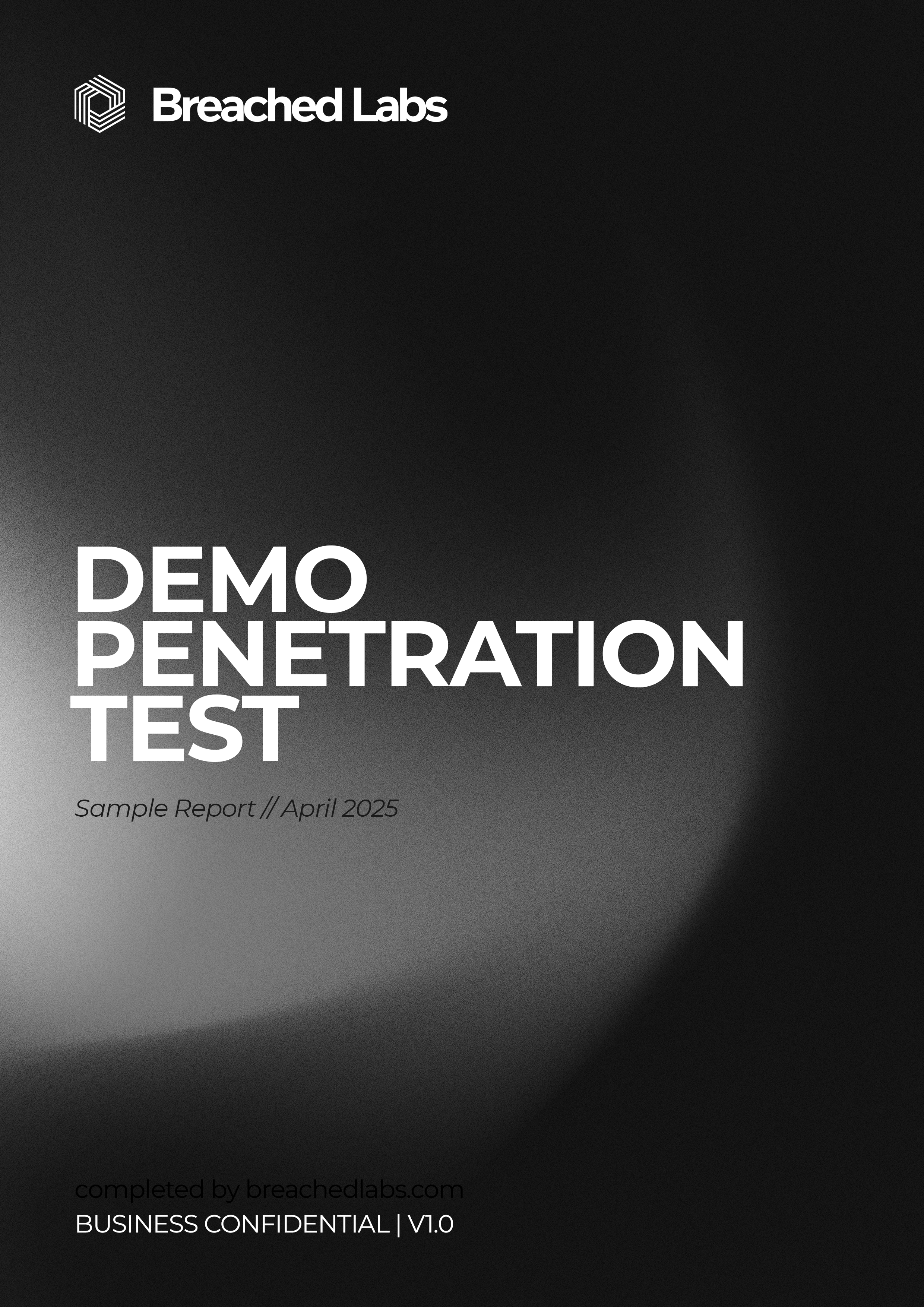External Attack Surface Assessment
Our External Attack Surface Assessment service uses advanced tools and expert analysis to discover and map all your internet-facing assets, identifying potential vulnerabilities before attackers can exploit them.
Understanding Your
External Attack Surface.
We specialize in External Attack Surface Assessment, helping businesses gain visibility into their internet-facing assets and potential entry points for attackers. Our experts use continuous monitoring and advanced discovery techniques to map your digital footprint, including known and unknown domains, IPs, and cloud services.
We meticulously analyze these assets for vulnerabilities, misconfigurations, and exposed sensitive data. Our actionable reports provide prioritized insights, enabling you to proactively reduce your attack surface and strengthen your overall security posture against emerging threats.
We analyze assets for vulnerabilities and misconfigurations, providing actionable insights to help you reduce risk and strengthen defenses proactively.
Our team holds industry-leading certifications, demonstrating our commitment to excellence in cybersecurity.

Our Team's Certifications
Our team possesses top-tier, industry-recognized certifications, showcasing our dedication to delivering cybersecurity excellence.
Benefits of External Attack Surface Assessment
Understand how mapping and analyzing your external assets protects your organization.
Discover Unknown Assets
Identify forgotten domains, shadow IT, and exposed services that increase your risk exposure before attackers find them.
Prioritize Vulnerabilities
Focus remediation efforts on the most critical external weaknesses based on potential impact and exploitability.
Enhance Security Posture
Gain comprehensive visibility into your external footprint to make informed decisions and continuously improve defenses.
Reduce Attack Surface
Minimize potential entry points for attackers by identifying and securing or decommissioning unnecessary external assets.
Improve Incident Response
Maintain an accurate inventory of external assets to speed up investigation and containment during security incidents.
Support Compliance
Demonstrate due diligence in asset management and vulnerability identification for various regulatory requirements.
Validate Security Controls
Verify that security measures like firewalls and WAFs are effectively protecting your internet-facing systems.
Why Assess Your Attack Surface?
Understanding your external attack surface is crucial for identifying potential entry points and vulnerabilities before attackers exploit them.
Prevent Breaches via Exposed Assets
Attack surface assessment identifies exposed databases, unsecured APIs, and misconfigured cloud services that could lead to significant data breaches and financial loss.
Maintain Reputation and Trust
Proactively identifying and mitigating external risks prevents security incidents that damage your brand reputation and erode customer trust.
Avoid Operational Disruptions
Discovering vulnerabilities in critical external systems prevents attacks like ransomware or DDoS that can cause costly downtime and operational chaos.
Secure Your Digital Transformation
As organizations expand their digital footprint (cloud, IoT, remote work), continuous attack surface assessment ensures new assets don't introduce critical risks.
Schedule a
Consultation
Ready to determine the most effective strategy for your business needs? Schedule your complimentary, no-obligation assessment call with one of our experts today using the link below.
During our call, we'll begin outlining a comprehensive plan designed to safeguard your business against the cyber threats relevant to your operations.
Book a callOur External Attack Surface Assessment covers a wide range of internet-facing assets and potential exposures, ensuring comprehensive visibility into your organization's digital footprint.
Domain & Subdomain Discovery
Identifying all known and unknown domains associated with your organization.
IP Address & Network Scanning
Mapping active IP addresses and understanding network ranges.
Open Port Identification
Detecting open ports and services exposed to the internet.
Technology Stack Fingerprinting
Identifying web servers, frameworks, and software versions in use.
SSL/TLS Certificate Analysis
Checking certificate validity, configuration, and potential weaknesses.
Cloud Asset Inventory
Discovering publicly exposed cloud resources (storage, databases, instances).
Exposed Sensitive Information
Searching for leaked credentials, API keys, or PII on public platforms.
Code Repository Leaks
Scanning public code repositories for accidentally exposed source code or secrets.
Vulnerability Scanning (External)
Performing non-intrusive scans for known vulnerabilities on discovered assets.
External Attack Surface Assessment Methodology
Our systematic approach to discovering, analyzing, and reporting on your external digital footprint.
Scoping & Planning
Define the initial scope, typically based on your organization's primary domains and brands. Establish objectives, reporting requirements, and communication protocols.
Obtain necessary authorizations and understand any specific areas of focus or exclusion. This ensures the assessment is aligned with your business context and security goals.
- Define target brands, primary domains, and known organizational entities.
- Establish assessment objectives (e.g., inventory creation, vulnerability identification, compliance check).
- Agree on reporting frequency, format, and delivery mechanisms.
- Confirm authorization and define communication points of contact.
- Identify any known sensitive assets or networks to handle with extra care or exclude if necessary.
Asset Discovery
Employ automated and manual techniques to comprehensively identify all internet-facing assets associated with the organization. This includes known and unknown or hidden assets.
Utilize sources like DNS records, certificate transparency logs, search engines, ASN lookups, and cloud provider information to build a complete inventory.
- Enumerate domains, subdomains, and related DNS records (A, CNAME, MX, TXT).
- Identify associated IP address ranges and autonomous system numbers (ASNs).
- Scan certificate transparency logs for related hostnames.
- Leverage search engine dorking and OSINT techniques.
- Discover publicly accessible cloud storage, databases, and server instances.
- Identify potentially linked code repositories or developer platforms.
Enrichment & Fingerprinting
Gather detailed information about each discovered asset to understand its function, technology stack, and potential exposure points.
This involves identifying open ports, running services, web technologies, associated metadata, and verifying asset ownership where possible.
- Perform port scanning to identify open TCP/UDP ports and running services.
- Fingerprint web servers, application frameworks, and underlying technologies.
- Analyze HTTP headers, DNS records, and WHOIS information for metadata.
- Identify content management systems (CMS), JavaScript libraries, and other components.
- Attempt to attribute assets to specific business units or functions.
- Analyze SSL/TLS certificate details and configurations.
Vulnerability Identification
Actively probe discovered assets for known vulnerabilities, misconfigurations, and security weaknesses using a combination of automated scanning and manual checks.
Focus on identifying issues like outdated software, default credentials, exposed services, insecure configurations (e.g., open S3 buckets), and information leakage.
- Scan for common web application vulnerabilities (OWASP Top 10).
- Identify missing security headers and insecure cookie configurations.
- Check for publicly exposed login panels or administrative interfaces.
- Scan for known CVEs in identified software versions.
- Assess cloud service configurations for security best practice deviations.
- Search for leaked credentials, API keys, or sensitive data exposure.
- Analyze SSL/TLS cipher suites and protocol support for weaknesses.
Analysis & Prioritization
Correlate data from discovery, enrichment, and vulnerability identification phases. Analyze findings to understand the overall attack surface posture and identify high-risk areas.
Prioritize vulnerabilities based on severity, exploitability, asset criticality, and potential business impact to focus remediation efforts effectively.
- Validate findings from automated tools to reduce false positives.
- Assess the potential impact of identified vulnerabilities.
- Assign risk scores (e.g., CVSS) and prioritize based on context.
- Identify attack paths combining multiple lower-severity issues.
- Group similar vulnerabilities affecting multiple assets.
- Analyze trends and common weaknesses across the attack surface.
Reporting & Remediation
Compile all findings into comprehensive reports detailing the discovered attack surface, identified vulnerabilities, and associated risks.
Provide clear, actionable recommendations for remediation and mitigation, tailored to your environment. Offer executive summaries for management and detailed technical sections for security teams.
- Document the complete discovered asset inventory.
- Provide detailed descriptions of identified vulnerabilities and misconfigurations.
- Include evidence (screenshots, logs) for each finding.
- Offer specific, actionable steps for remediation or mitigation.
- Prioritize recommendations based on risk analysis.
- Deliver executive summary outlining key risks and posture.
- Conduct debriefing sessions to discuss findings and answer questions.
Our Assessment Process
Follow these steps to gain continuous visibility and control over your external attack surface.
Initial Consultation
Contact us to discuss your organization's needs. We'll cover your primary domains/brands, key concerns, objectives for the assessment (e.g., asset inventory, risk reduction), and desired reporting frequency.
Scope Definition
Based on our discussion, we'll define the initial scope (target domains, known subsidiaries) and provide a clear proposal outlining the service, deliverables, and costs. We'll also finalize authorization for the assessment.
Assessment Kick-off
Once the agreement is in place, we initiate the assessment. Our systems begin the discovery process, mapping your external assets like domains, IPs, cloud services, and identifying associated technologies.
Initial Findings & Reporting
We provide an initial report detailing the discovered attack surface, preliminary findings (e.g., exposed services, potential misconfigurations), and risk prioritization. We'll review this with you to ensure alignment.
Ongoing Monitoring
Our platform continues to monitor your external attack surface, identifying new assets and vulnerabilities. You receive regular reports and alerts, helping you maintain visibility and manage external risks proactively.
Breached Labs strengthened our overall security posture with their thorough penetration testing approach. Their expertise in identifying and addressing vulnerabilities was invaluable to our organization.
Chief Information Officer
Fortune 500 Tech Company
Contact Options
Get in Touch
Let’s talk about how we can strengthen your security posture.
